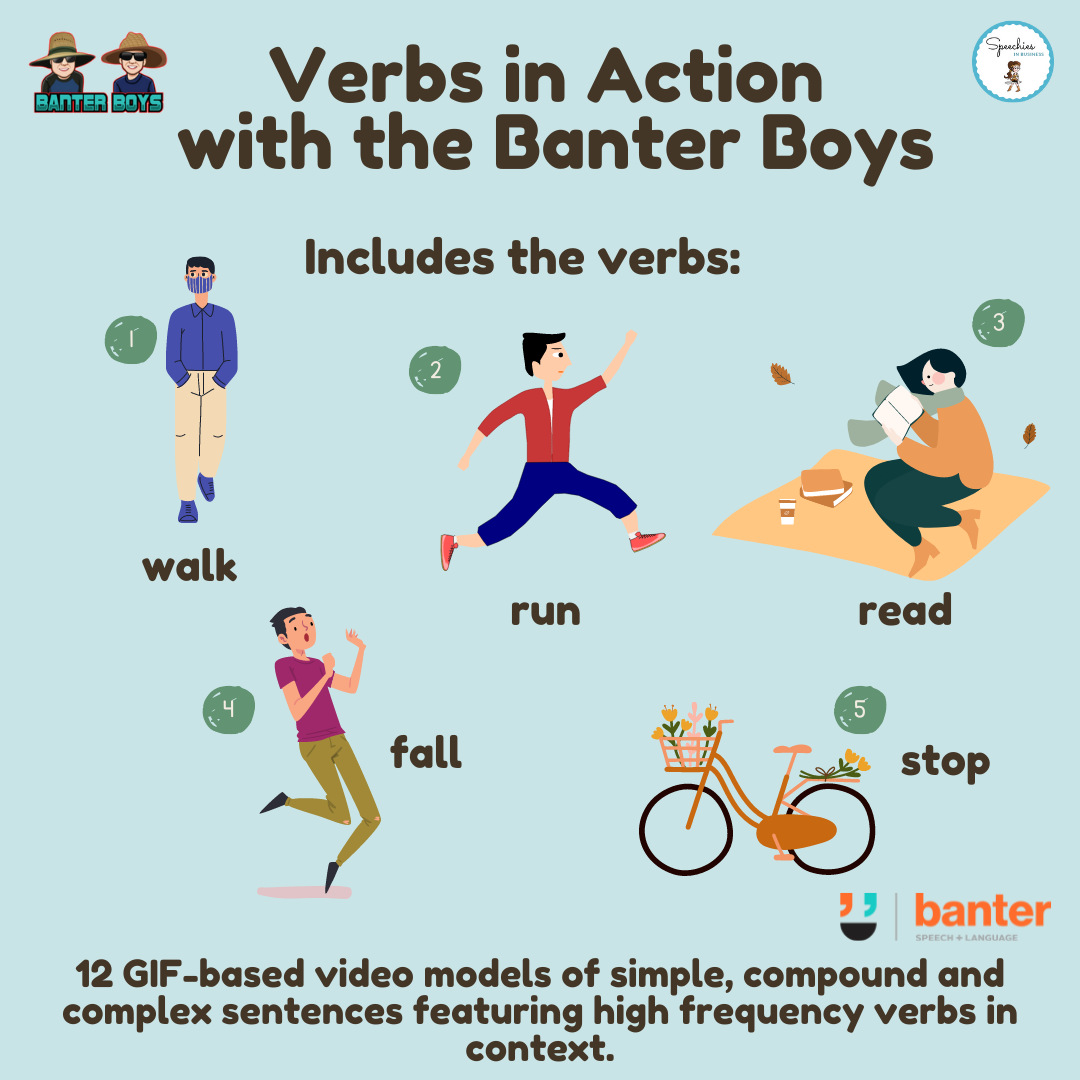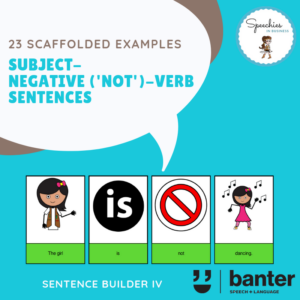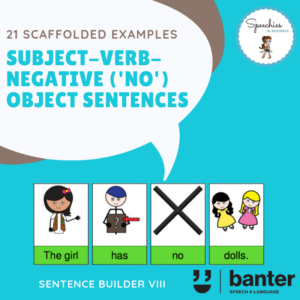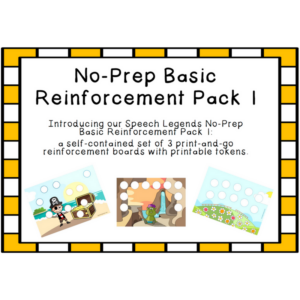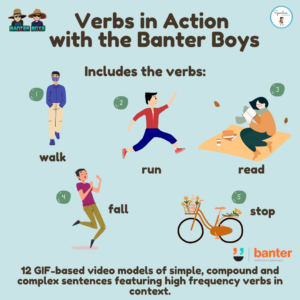(L102) Verbs in Action: GIF-based video models of simple, compound and complex sentences
$5.99 including GST
Verbs are all about actions. A great way to teach high frequency verbs in sentences is with pictures that move: GIFs! The 12 verbs featured are: run, walk, read, fall, stop, sit, draw, knock, throw, help, play, and kick.
In this resource, we include GIFs of children demonstrating high frequency verbs in action. To play the GIFs, copy the slides onto your Google Drive.
For each video-model, we scaffold four examples of different kinds of sentences you can use to model language with each GIF, e.g.:
- Subject Verb (SV) Sentences: “The boy is walking.”
- Subject Verb Adverbial (SVA) Sentences: “The boy is walking outside.”
- Compound Sentences: “The boy is walking and thinking.”
- Complex Sentences: “The boy is walking because his bike is broken.”
Description
12 GIF-based video models of simple, compound and complex sentences featuring high frequency verbs in context and the Banter Boys. The verbs featured are: run, walk, read, fall, stop, sit, draw, knock, throw, help, play, and kick.
Verbs are all about actions. A great way to teach high frequency verbs in sentences is with pictures that move: gifs!
For many students, verbs are harder to learn than nouns – in part because you can’t touch them, and in part because they are transient.
In this resource, we include GIFs of children demonstrating high frequency verbs in action. To play the GIFs, copy the slides onto your Google Drive.
For each video-model, we scaffold four examples of different kinds of sentences you can use to model language with each video, e.g.:
- Subject Verb (SV) Sentences: “The boy is walking.”
- Subject Verb Adverbial (SVA) Sentences: “The boy is walking outside.”
- Compound Sentences: “The boy is walking and thinking.”
- Complex Sentences: “The boy is walking because his bike is broken.”
Here’s an example:
This resource can be used in a variety of ways:
- For late talkers and preschoolers, you can use the videos to provide early language stimulation, including modelling, recasting, focused stimulation, imitation, build ups and breakdowns.
- For younger school children, you can use the videos to practice verb-tenses and sentence expansions (e.g. “What did the boy do? He walked outside. He walked outside because it was a sunny day, although he should have been doing his homework.”).
- For older students, you can use the videos and sentences as stimuli for dictation and writing practice, or for higher level language tasks like sequencing, descriptions, explanations, problem solving, and narrative writing.
We use this resource regularly in our busy speech pathology clinic with a variety of students, and hope you find it as flexible and useful as we do as you work to help your students with verbs in sentences.
More about verbs and why they are important for language development
Many children have difficulties with verbs:
- late-talking toddlers have problems learning, remembering and using verbs (e.g. Widfuhr et al., 2002);
- late-talking toddlers use dramatically fewer verbs – an average of about 3 compared with almost 46 for typically developing toddlers (Ellis Weismer et al., 2001); and
- older children with a history of language disorders have problems using verbs correctly. For example, they often struggle with regular past tense verbs (e.g. “jumped”), irregular past tense verbs (e.g. “drew”, “fell”, “broke”, “went”) and auxiliary verbs (e.g. “have”) (e.g. Leonard, 2014).
Verbs are important for language development:
- Two-year olds with only a few verbs in their vocabulary are at increased risk of language disorders (Olswang et al., 1998).
- Verbs are essential for many word combinations and all sentences. A lack of verbs means late-talking two-year olds are less likely to combine words than 16-month olds with the same size vocabulary (Ellis Weismer et al., 2001).
- Knowledge and use of different kinds of verbs may kick-start grammatical development (e.g. Tomasello, 2005). Researchers talk about verbs having a “privileged” role in sentence production (e.g. Bock & Levelt, 1994).
For more information about verbs and their importance, check out our article Late talkers: the importance of verbs to kick-start language development.
Volume 2 of Verbs in Action is now available featuring the verbs put, jump, call, swing, close, bounce, go, count, get, and fight.
Related resources:
- Regular Past Tense Verbs Bundle: when “ed” is pronounced as /t/, /d/ and /əd/
- No-Prep High Frequency Irregular Past Tense Verb Sentence Drills Bundle
- No-Prep High Frequency Irregular Past Tense Verb Narrative Workout Bundle
- The Action Describer: Verb-Description Program Using Semantic Feature Analysis

